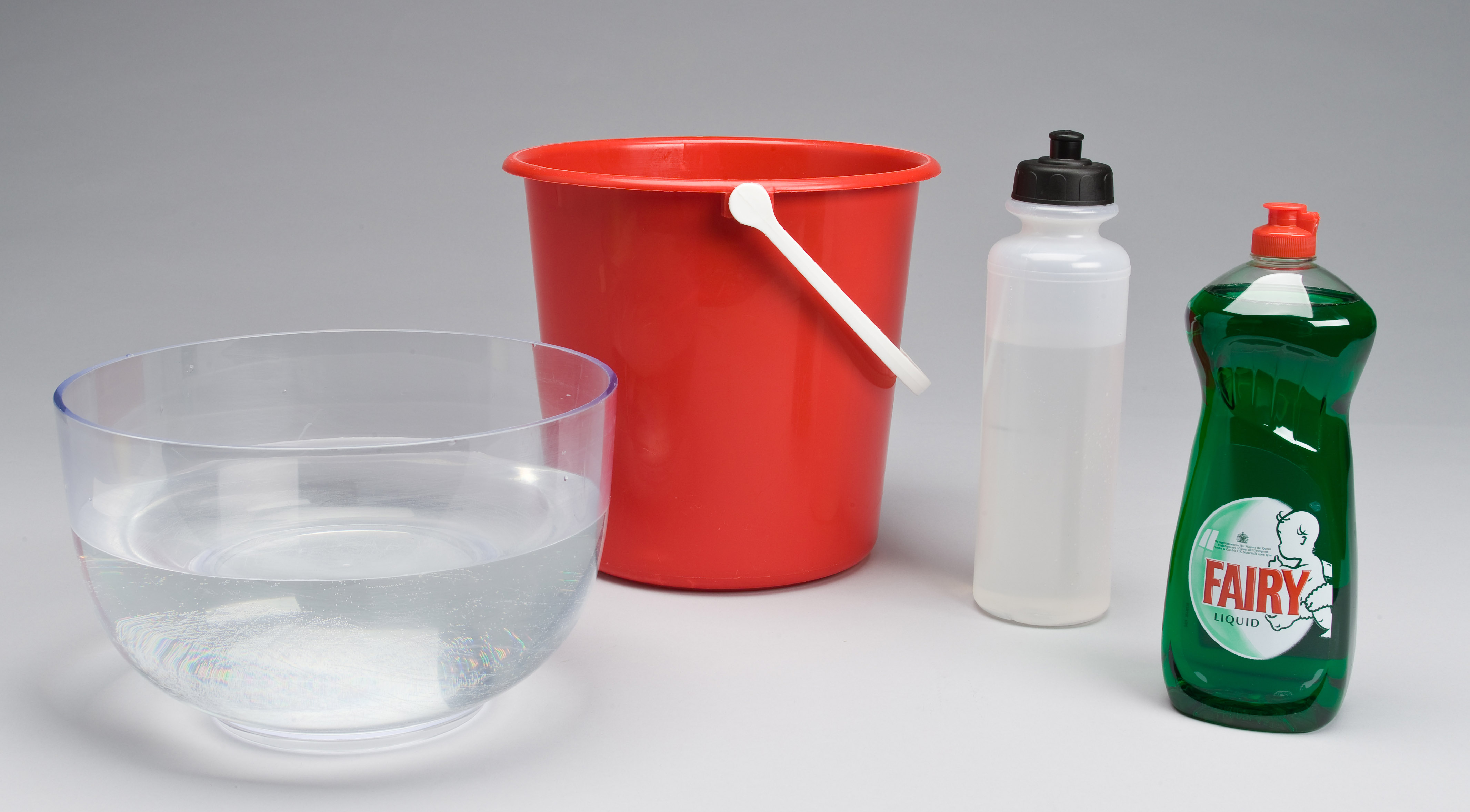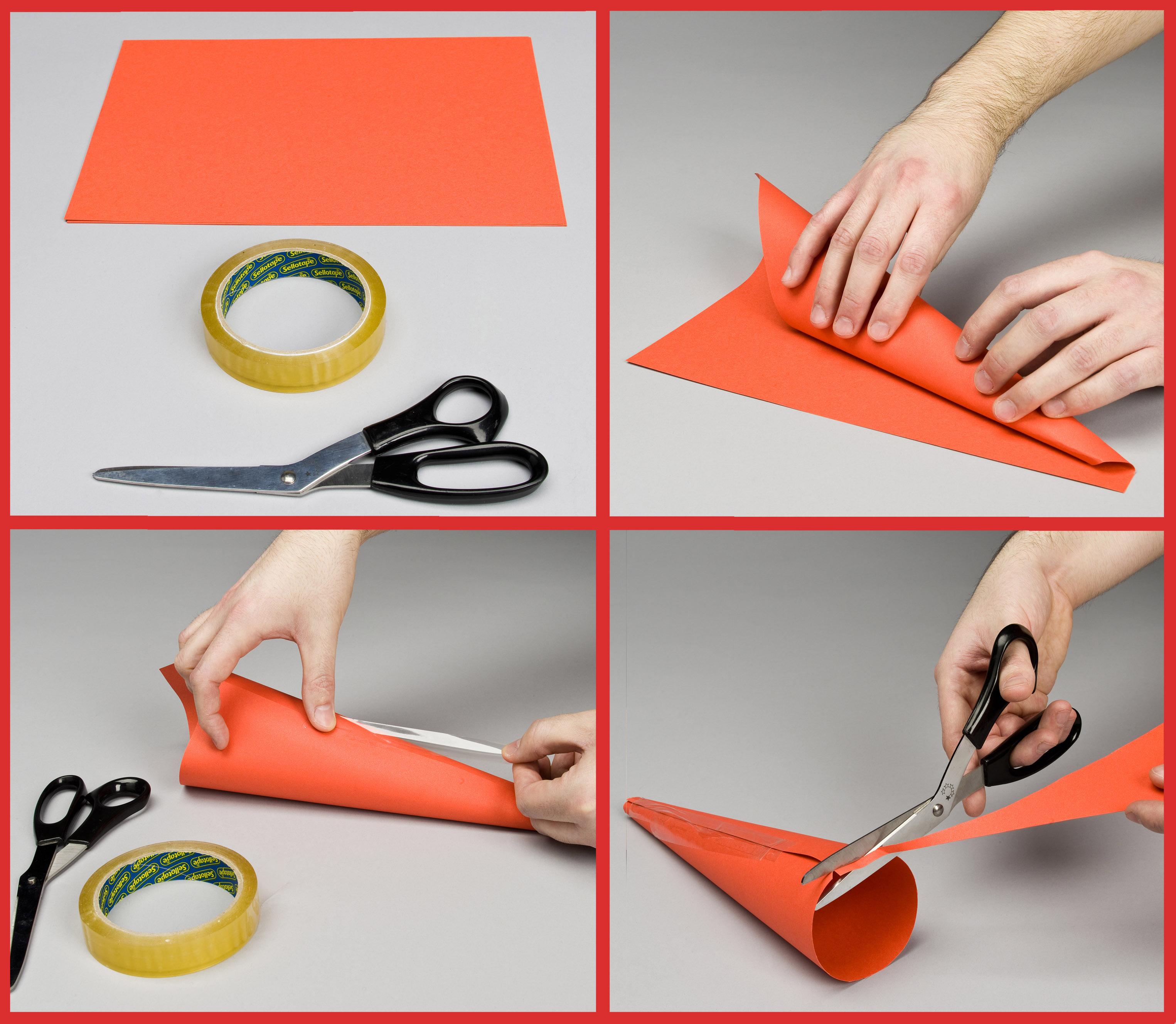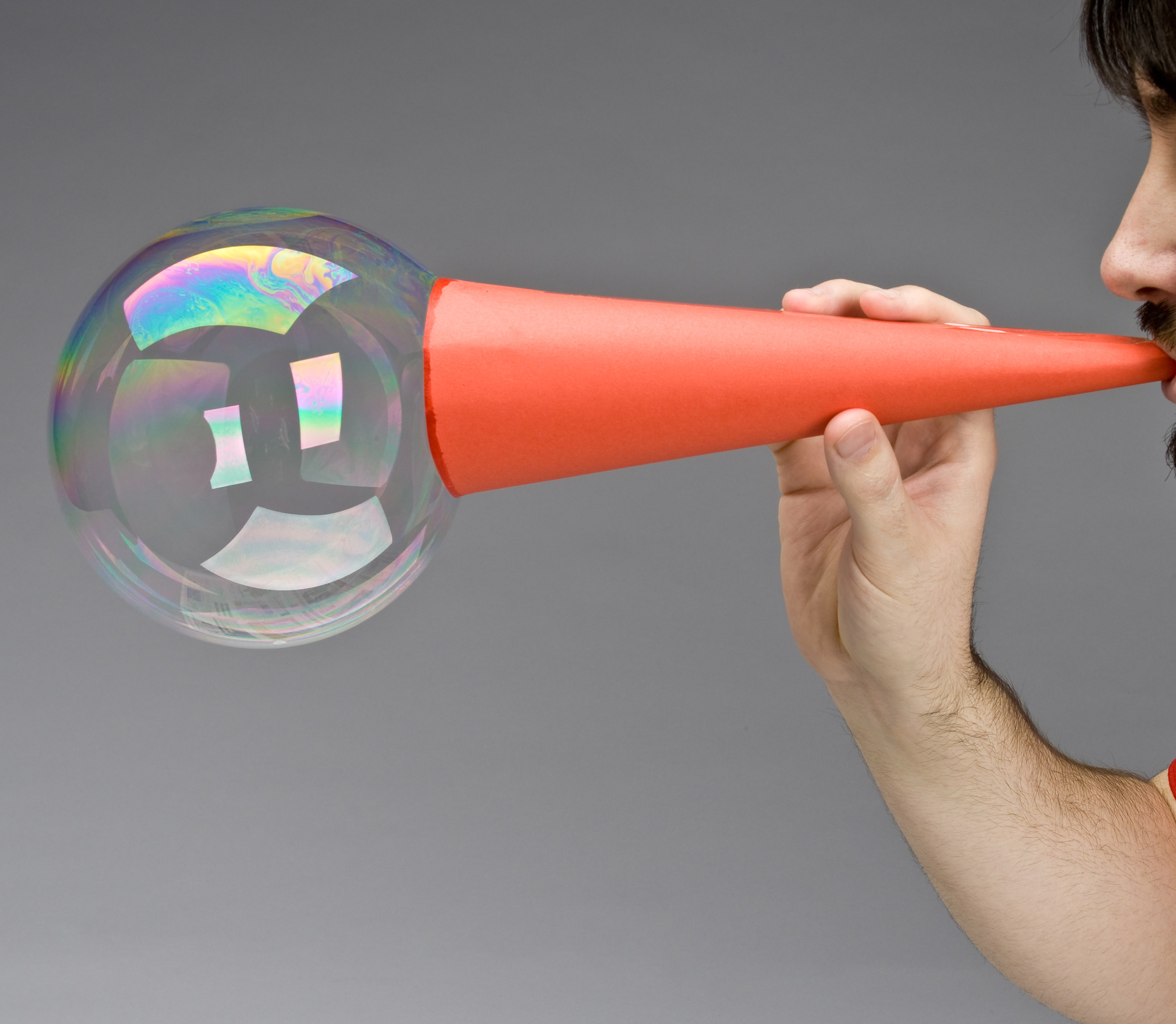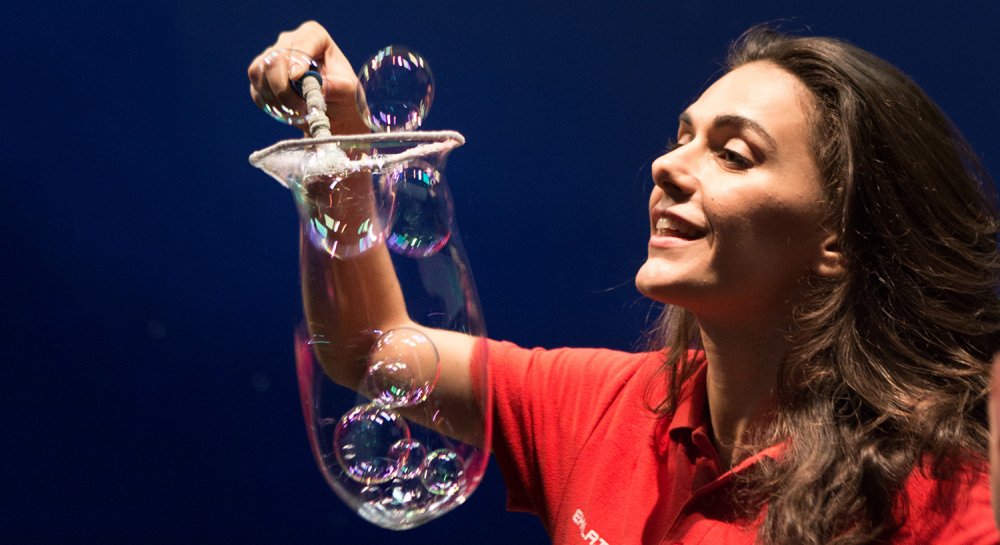Here in the Outreach Team, it’s our job to travel the country (and sometimes the world) bringing exciting science shows and workshops into classrooms, school halls, fields and town centres.
We are often asked about what our favourite shows are, and everyone in the team has their own particular choice. But, our most popular show by far is most certainly The Bubble Show, last year we performed 149 of them!
So with that in mind, we thought we’d share a few of our bubble secrets. To make your bubble mix you will need:

We add glycerol (sometimes sold as glycerine) to our mix because it slows down the evaporation of the water. This means the bubbles can last longer and the bubble mix is great for making really big bubbles too. Remember, most of the mix is water, with only a small amount of washing-up liquid and glycerol – experiment with different proportions and see how your bubbles change.
You can buy glycerol from a high- street chemist but if you can’t get hold of any, sugar does the job as well. Just dissolve it in some warm water and add a little to your bubble mix. Sugar will make your bubbles sticky though!
Once you have your lovely bucket of bubble mix you can start to make bubbles using all sorts of things, here are a few ideas.
Why not make your own bubble trumpet?


Or how about a giant bubble wand using a coat hanger? 
 Have a look around the house and see what else you could use to make bubbles. Old tennis racquets are great for making lots of little bubbles all at once, even straws or plastic cups with the bottom cut off are great for blowing bubbles.
Have a look around the house and see what else you could use to make bubbles. Old tennis racquets are great for making lots of little bubbles all at once, even straws or plastic cups with the bottom cut off are great for blowing bubbles.
Check out this printable guide for making even more bubble-blowing devices.
Did you know…
Bubbles are very colourful, but just before they pop they can appear to turn black. Bubbles will always try to form a sphere shape, this shape requires the least amount of energy as it reduces the surface area.
The world record for the largest free-floating bubble was set by Jarom Watts in 2009, his bubble was 13.67m3.